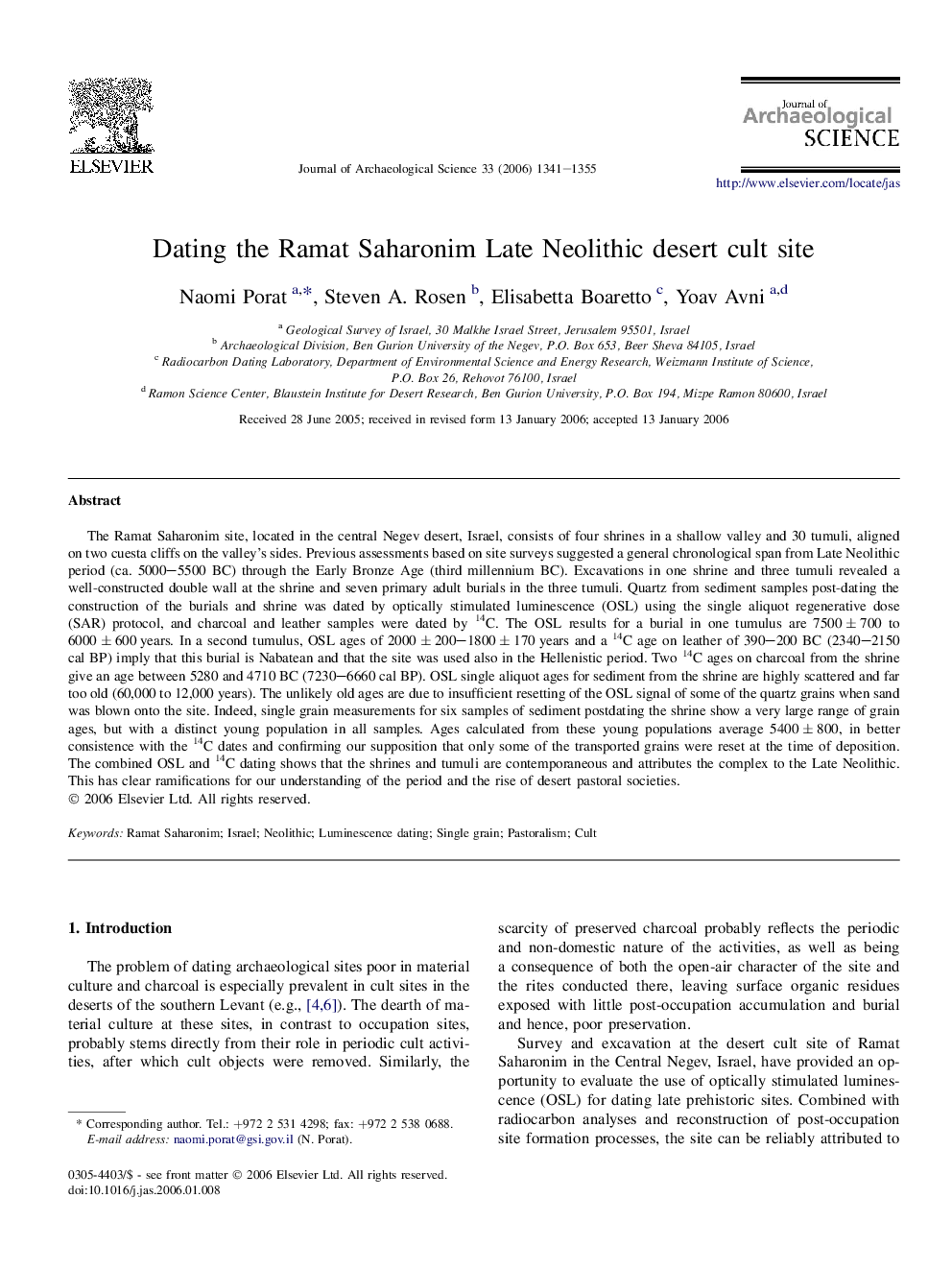| کد مقاله | کد نشریه | سال انتشار | مقاله انگلیسی | نسخه تمام متن |
|---|---|---|---|---|
| 1037407 | 943926 | 2006 | 15 صفحه PDF | دانلود رایگان |

The Ramat Saharonim site, located in the central Negev desert, Israel, consists of four shrines in a shallow valley and 30 tumuli, aligned on two cuesta cliffs on the valley's sides. Previous assessments based on site surveys suggested a general chronological span from Late Neolithic period (ca. 5000–5500 BC) through the Early Bronze Age (third millennium BC). Excavations in one shrine and three tumuli revealed a well-constructed double wall at the shrine and seven primary adult burials in the three tumuli. Quartz from sediment samples post-dating the construction of the burials and shrine was dated by optically stimulated luminescence (OSL) using the single aliquot regenerative dose (SAR) protocol, and charcoal and leather samples were dated by 14C. The OSL results for a burial in one tumulus are 7500 ± 700 to 6000 ± 600 years. In a second tumulus, OSL ages of 2000 ± 200–1800 ± 170 years and a 14C age on leather of 390–200 BC (2340–2150 cal BP) imply that this burial is Nabatean and that the site was used also in the Hellenistic period. Two 14C ages on charcoal from the shrine give an age between 5280 and 4710 BC (7230–6660 cal BP). OSL single aliquot ages for sediment from the shrine are highly scattered and far too old (60,000 to 12,000 years). The unlikely old ages are due to insufficient resetting of the OSL signal of some of the quartz grains when sand was blown onto the site. Indeed, single grain measurements for six samples of sediment postdating the shrine show a very large range of grain ages, but with a distinct young population in all samples. Ages calculated from these young populations average 5400 ± 800, in better consistence with the 14C dates and confirming our supposition that only some of the transported grains were reset at the time of deposition. The combined OSL and 14C dating shows that the shrines and tumuli are contemporaneous and attributes the complex to the Late Neolithic. This has clear ramifications for our understanding of the period and the rise of desert pastoral societies.
Journal: Journal of Archaeological Science - Volume 33, Issue 10, October 2006, Pages 1341–1355